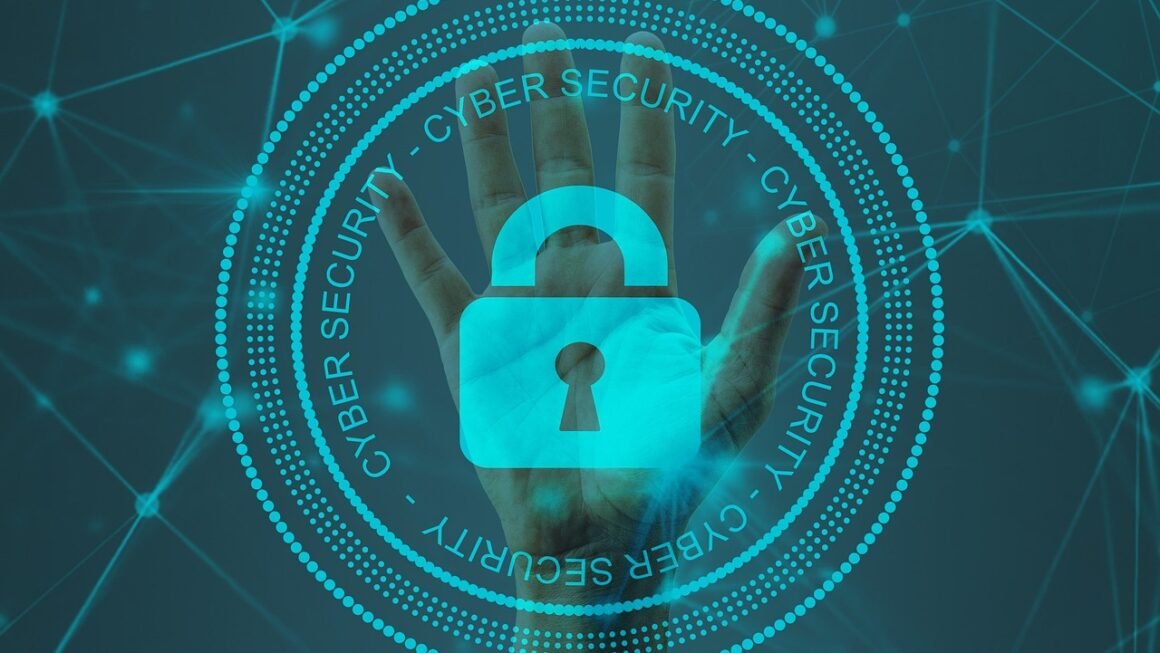Cyberattacks are becoming increasingly sophisticated and frequent, impacting businesses of all sizes and across all industries. Staying one step ahead of these threats requires a robust and proactive approach to cyber defense. This isn’t just about installing antivirus software; it’s about building a comprehensive strategy that incorporates technology, processes, and people to protect your valuable data and assets. Let’s dive into the key components of a strong cyber defense posture.
Understanding Cyber Defense
What is Cyber Defense?
Cyber defense encompasses the strategies, technologies, and processes used to protect computer systems, networks, and digital data from unauthorized access, damage, or theft. It’s a multi-layered approach that involves preventing attacks, detecting intrusions, and responding effectively to incidents.
- Cyber defense is not a one-time fix but an ongoing process of assessment, implementation, and improvement.
- It’s about reducing the attack surface and minimizing the potential impact of a successful breach.
- It includes protecting hardware, software, networks, and data.
Why is Cyber Defense Important?
In today’s digital landscape, a strong cyber defense strategy is critical for several reasons:
- Protecting Sensitive Data: Safeguarding customer data, financial information, and intellectual property is paramount for maintaining trust and competitive advantage.
- Maintaining Business Continuity: Cyberattacks can disrupt operations, leading to downtime, lost revenue, and reputational damage.
- Ensuring Regulatory Compliance: Many industries are subject to regulations like GDPR, HIPAA, and PCI DSS, which require organizations to implement specific security measures. Failure to comply can result in significant fines.
- Preventing Financial Loss: Cyberattacks, such as ransomware, can result in direct financial losses through ransom payments, recovery costs, and legal fees.
- Preserving Reputation: Data breaches and cyber incidents can severely damage a company’s reputation, leading to a loss of customers and investor confidence. A recent IBM report estimates the average cost of a data breach to be $4.35 million globally.
Building a Strong Cyber Defense Strategy
Risk Assessment and Management
A comprehensive risk assessment is the foundation of any effective cyber defense strategy. This involves identifying potential threats, assessing vulnerabilities, and determining the likelihood and impact of a successful attack.
- Identify Assets: Determine what data and systems are most critical to your business.
- Identify Threats: Understand the types of attacks you’re most likely to face (e.g., malware, phishing, ransomware, DDoS attacks). Use resources like the MITRE ATT&CK framework to learn about common attack tactics and techniques.
- Assess Vulnerabilities: Identify weaknesses in your systems, networks, and applications. This can be done through vulnerability scanning, penetration testing, and security audits. Tools like Nessus or OpenVAS are commonly used for vulnerability scanning.
- Determine Risk: Calculate the likelihood and impact of each threat exploiting a vulnerability.
- Prioritize Risks: Focus on addressing the highest-priority risks first.
- Implement Controls: Implement security measures to mitigate the identified risks.
Implementing Security Controls
Security controls are the technical and administrative safeguards that are implemented to protect against cyber threats. These controls can be categorized into several types:
- Preventive Controls: These controls are designed to prevent attacks from occurring in the first place. Examples include:
Firewalls
Intrusion Prevention Systems (IPS)
Antivirus software
Access controls (e.g., multi-factor authentication)
Data encryption
Regular security patching
- Detective Controls: These controls are designed to detect attacks that have already occurred or are in progress. Examples include:
Intrusion Detection Systems (IDS)
Security Information and Event Management (SIEM) systems
Log monitoring
Endpoint Detection and Response (EDR) solutions
- Corrective Controls: These controls are designed to mitigate the impact of an attack and restore systems to a normal state. Examples include:
Incident response plans
Data backups and recovery procedures
System hardening
Malware removal tools
Employee Training and Awareness
Humans are often the weakest link in the security chain. Employee training and awareness programs are essential for educating users about cyber threats and how to avoid them.
- Phishing Simulations: Conduct regular phishing simulations to test employees’ ability to identify and report phishing emails.
- Security Awareness Training: Provide training on topics such as password security, malware prevention, social engineering, and data privacy. Make sure the training is engaging and relevant to their roles.
- Incident Reporting: Encourage employees to report suspicious activity immediately.
- Regular Updates: Keep employees informed about the latest threats and security best practices.
For example, simulating phishing attacks can significantly reduce the click-through rate on real phishing emails. A well-designed security awareness program can turn employees into a valuable line of defense.
Essential Cyber Defense Technologies
Firewalls and Intrusion Detection/Prevention Systems
Firewalls act as a barrier between your network and the outside world, controlling network traffic based on predefined rules. Intrusion Detection Systems (IDS) and Intrusion Prevention Systems (IPS) monitor network traffic for malicious activity and can either alert administrators (IDS) or automatically block the activity (IPS).
- Firewalls: Choose a firewall that meets your organization’s needs, considering factors such as performance, features, and ease of management. Next-generation firewalls (NGFWs) offer advanced capabilities such as application control and intrusion prevention.
- IDS/IPS: Implement IDS/IPS solutions that can detect a wide range of threats, including malware, network intrusions, and denial-of-service attacks. Ensure that these systems are properly configured and regularly updated.
Endpoint Detection and Response (EDR)
EDR solutions provide advanced threat detection and response capabilities on individual endpoints, such as computers and servers.
- Real-time Monitoring: EDR solutions continuously monitor endpoints for malicious activity.
- Threat Detection: They use behavioral analysis and machine learning to identify suspicious activity that may bypass traditional antivirus software.
- Incident Response: EDR solutions provide tools for investigating incidents, isolating infected endpoints, and remediating threats.
Security Information and Event Management (SIEM)
SIEM systems collect and analyze security data from various sources across the IT environment, providing a centralized view of security events.
- Log Collection: SIEM systems collect logs from firewalls, servers, applications, and other sources.
- Event Correlation: They correlate events from different sources to identify patterns and anomalies that may indicate a security incident.
- Alerting: SIEM systems generate alerts when suspicious activity is detected.
- Reporting: They provide reports on security trends and incidents.
Incident Response and Recovery
Developing an Incident Response Plan
An incident response plan outlines the steps that should be taken in the event of a cyberattack or security breach.
- Identification: Define procedures for identifying and reporting security incidents.
- Containment: Describe how to contain the incident to prevent further damage. This might include isolating infected systems and disabling compromised accounts.
- Eradication: Outline how to remove the threat from the affected systems.
- Recovery: Explain how to restore systems to a normal state and recover lost data.
- Lessons Learned: Document the incident and identify lessons learned to improve future responses.
Data Backup and Recovery
Regular data backups are essential for recovering from data loss or corruption caused by cyberattacks, hardware failures, or other disasters.
- Backup Strategy: Develop a comprehensive backup strategy that includes regular backups of critical data and systems. Consider using a combination of on-site and off-site backups.
- Testing: Regularly test your backup and recovery procedures to ensure that they work as expected.
- Recovery Time Objective (RTO): Define the maximum acceptable downtime for your critical systems.
- Recovery Point Objective (RPO): Determine the maximum acceptable data loss in the event of a disaster.
Staying Ahead of Emerging Threats
Threat Intelligence
Staying informed about the latest threats and vulnerabilities is crucial for maintaining a strong cyber defense posture. Threat intelligence sources provide information about emerging threats, attack techniques, and vulnerabilities.
- Subscribe to Threat Feeds: Subscribe to threat feeds from reputable security vendors and government agencies.
- Participate in Information Sharing: Participate in information-sharing communities to exchange threat information with other organizations.
- Conduct Regular Threat Assessments: Conduct regular threat assessments to identify the threats that are most relevant to your organization.
Regular Security Assessments and Audits
Regular security assessments and audits can help identify vulnerabilities and weaknesses in your security posture.
- Vulnerability Scanning: Conduct regular vulnerability scans to identify known vulnerabilities in your systems and applications.
- Penetration Testing: Hire a qualified penetration tester to simulate real-world attacks and identify weaknesses in your defenses.
- Security Audits: Conduct regular security audits to ensure that your security controls are properly implemented and effective.
Conclusion
Cyber defense is a continuous process that requires ongoing vigilance and adaptation. By implementing a comprehensive strategy that incorporates risk assessment, security controls, employee training, essential technologies, and incident response planning, organizations can significantly reduce their risk of falling victim to cyberattacks. Staying informed about emerging threats and conducting regular security assessments are crucial for maintaining a strong cyber defense posture in the face of an ever-evolving threat landscape. Proactive and comprehensive cyber defense is not just an expense; it’s an investment in the long-term health and sustainability of your business.



